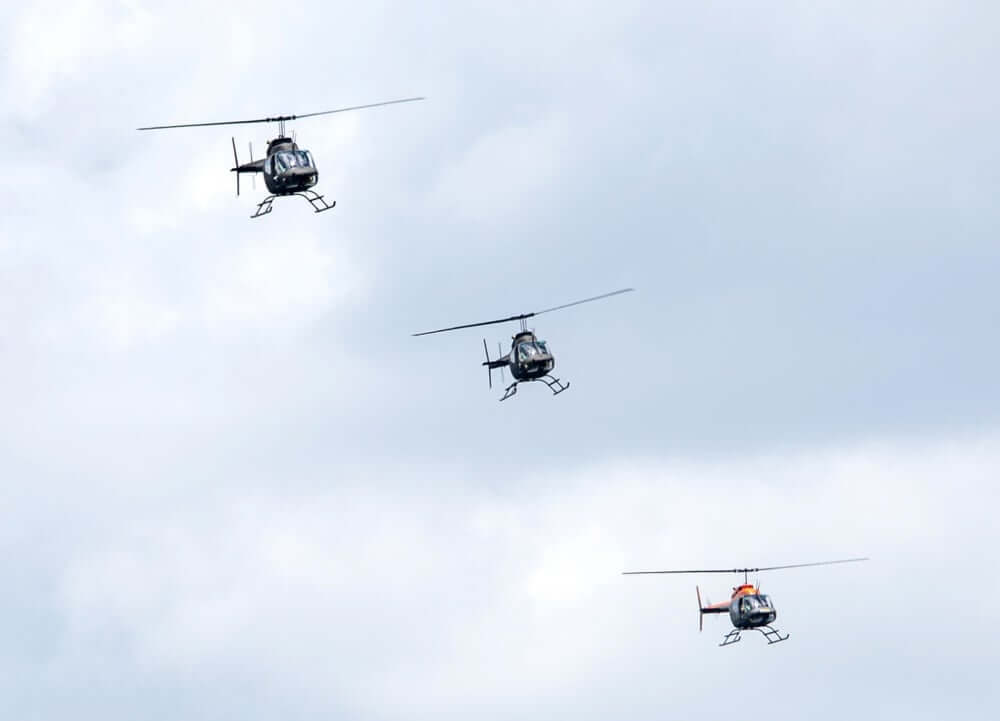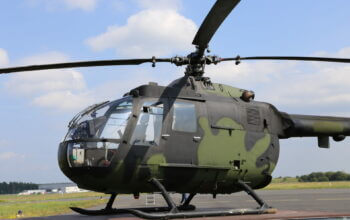On July 9 at 1 p.m., eight pilots with the 1st Battalion, 5th Aviation Regiment, flew OH-58C Kiowa helicopters in a double “V” formation over the Joint Readiness Training Center (JRTC) and Fort Polk for the aircrafts’ final flight.
The Kiowas have been replaced by the UH-72 Lakota.

Capt. Tyler Smith, commander, Bravo Company “Gators,” 1st Bn, 5th Avn Reg, said there is a bit of nostalgia with the departure of the Kiowas, which have been a part of Fort Polk since the early 1980s.
“They were great birds to fly,” Smith said. “You could land them anywhere, in any type of environment; they were great for what we were using them for here.”
The OH-58 Kiowa is a family of single-engine, single-rotor military helicopters used for observation, utility and direct fire support. The aircraft has been in continuous Army service since 1969. At Fort Polk, the OH-58s have been in use since the 1980s, and were used to fly JRTC operations group observer, controller/trainers as they monitored units participating in the crucible that is the “Box.”
But times change, advances in technology are made and missions evolve. Thus, the Kiowas were replaced Army wide by the Lakota.
“The OH-58Cs here and at the National Training Center (Fort Irwin, California) are the last ones in the Army inventory,” Smith said. “When we retire them, they’re gone.”

Smith said a good way to compare the Kiowa and Lakota was to think about a Toyota Corolla and Porsche.
“You keep the maintenance up on the Corolla and she’ll get you where you need to go, with nothing fancy,” he said. “But if you’re a pilot, you like flying the Lakota because she’s sleek and has lots of bells and whistles.”
And, Smith said, with more rotations conceivably arriving at JRTC without aviation task force support, the Lakota adds another capability.
“The Kiowas were two-seaters,” he said. “They could carry a pilot and an OC/T. The Lakota can carry a pilot, OC/T and four passengers. That gives us increased capabilities.”
Although the Kiowas are being retired, like many old Soldiers, they will continue to serve in places such as sheriff’s offices in Texas, Alabama, Georgia and Florida.
Although three of the birds will be cannibalized for parts, eight will be used for police work. And one — tail No. O-16696, the oldest operational aircraft in the Army’s inventory — will remain at the JRTC and Fort Polk and set up as a static display, giving newly arriving soldiers and their families a glimpse of 5th Aviation history.
“There’s no doubt the Kiowas will be missed,” Smith said.
“They are a big part of the legacy of the JRTC and Fort Polk. But it’s time to move on, and I’m sure the Lakota will make it’s mark just as the Kiowas did, continuing the honored tradition of preparing Soldiers and units to go down range and succeed on the battlefield.”









